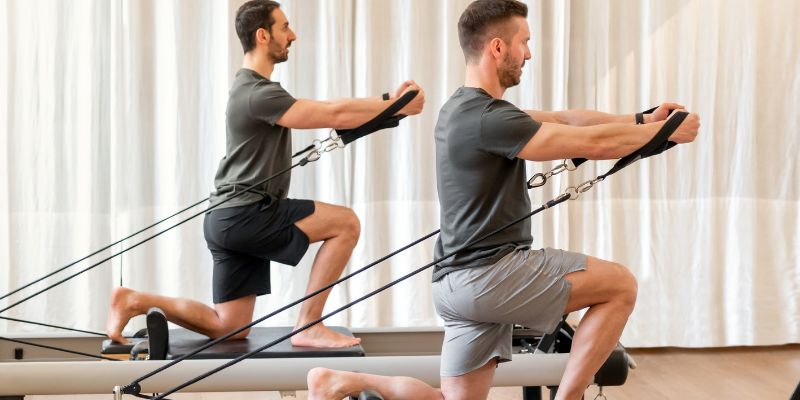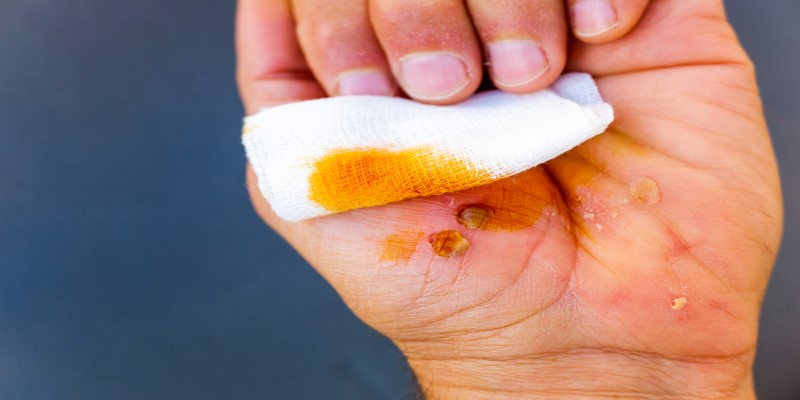9 Easy Training Programs To Become A Pilates Instructor
Feb 03, 2024 By Madison Evans
"Are you ready to become a Pilates instructor?" Have you ever considered converting your passion for Pilates into a fun job? If you appreciate teaching people the advantages of this innovative training plan, becoming a Pilates instructor might be the perfect match for you. This guide will help you through the stages of Pilates instructor training and to become a certified Pilates instructor, including studying several training programs that match your objectives, preferences, and price. This comprehensive guide will help you transform your passion for Pilates into excellent and meaningful job opportunities, from taking a Pilates class to selecting a style and form that looks right.
Follow These 9 Easy Training Programs To Become A Pilates Instructor
1. Take A Pilates Class.
Before becoming a Pilates instructor, check it out for yourself. Joining a Pilates class may help you learn the fundamentals, such as how the methods perform, what equipment is needed, and what terms are used. It's like having a personal sense of Pilates and how everything fits together.
It will also show how a Pilates teacher guides and corrects students while creating a pleasant and supportive learning atmosphere. For Pilates certification classes are necessary.
2. Select A Type.
Pilates has several different types, including classical, modern, and hybrid. Classical Pilates follows the original principles of Joseph Pilates, the method's creator, and uses an established exercise routine and order.
Modern Pilates offers current movement science research and creations, allowing additional workout types and changes. Hybrid Pilates blends traditional and modern Pilates and other disciplines, including yoga, dance, and martial arts. You should pick a method that is aligned with your movement philosophy.
3. Choose Your Pilates Style.
Pilates may be done in two ways: on a mat or using a specific apparatus. Mat Pilates performs exercises on a mat using your body weight and perhaps tiny instruments such as balls, bands, or rings.
Apparatus Pilates involves performing exercises on specialized devices such as the reformer, Cadillac, chair, and barrel. These devices offer resistance and support through the use of springs and belts. You can focus on one or both, depending on your preferences and the tools available.

4. Check Out The Training Programs.
Discover many Pilates instructor training programs, each with its curriculum, criteria, length, and cost. Take the time to learn about these possibilities and compare them using the following criteria:
Certification:
Confirm that an established organization, such as the Pilates Method Alliance (PMA), has approved the training program. They provide the criteria and guidelines for Pilates instruction and certification. Find a program covering various Pilates exercises while teaching anatomy, physiology, biomechanics, and movement concepts. A thorough curriculum should also prepare you to develop and conduct successful and safe Pilates programs for various clients and goals.
Format:
The program you use should provide a method of learning that is appropriate for your learning style and available time. Other courses take place online, others in person, and some in a combination of the two. Some programs allow you to move at your speed and in any sequence, but others have a fixed timetable and order.
Teachers:
The program should include skilled and seasoned teachers who can offer advice and support. Look for teachers with PMA certification, a degree in a comparable field, and a few years of teaching experience.
Support:
The training program should provide sufficient support and resources, such as manuals, videos, discussion boards, and relationships with previous students.
You should also have access to the tools and facilities necessary for your training and practice.
5. Enroll In The Program.
Once you've chosen a program that meets your requirements and expectations, you should enroll and pay the costs. Check the requirements and prepare for the program accordingly. Some programs may need a specific degree of Pilates expertise, an understanding of anatomy, or CPR certification. Make sure you have enough time and dedication to finish the program successfully.
6. Finish The Program.
The learning plan will include several hours of coursework, practice, observation, and teaching. Attend every lesson, complete all assignments, and actively participate in learning. Take advantage of opportunities to improve your abilities and get feedback from your instructors and fellow students. Keep records of your hours as well as your progress and difficulties.

7. Take The Test.
After completing the program, you must take a test to show your knowledge and abilities as a Pilates instructor. Depending on the curriculum, the test might be written, practical, or both. Review the content, do the activities, and plan for the test correctly. Check the exam format, location, date, and cost before registering for the test.
8. Get A Certificate.
Once you complete the test, the application will provide you with a completion certificate. This certificate allows you to communicate your Pilates abilities at the level you have trained. But to improve your reputation as a Pilate’s instructor, consider getting national certification from the PMA.
PMA certification is regarded as the top standard in the Pilates industry, requiring at least 450 hours of Pilates study and practice and passing a thorough test. Check the eligibility and application requirements, and if you're interested, apply for PMA certification. Pilates instructor certification plays very important role in this field.
9. Start Teaching.
Congratulations! You are now a Pilates instructor! Consider looking for teaching opportunities across multiple locations, such as Pilates studios, health clubs, wellness centers, or private residences. You may also start your own business and market your services online or through recommendation of mouth. It would help if you always tried to provide excellent Pilates teaching to your customers with a professional touch.
Continue to develop and refine your abilities as a Pilates instructor. Take extra courses and renew your PMA membership to keep your certification current. It's all about giving your clients the most excellent possible experience while staying current in the Pilates industry.
Conclusion
Are you ready to become a Pilates instructor? This guide makes things simple. Start by taking a Pilates class to learn the fundamentals. Choose a style - classical, modern, or hybrid - and whether you prefer mat or apparatus Pilates. Study training programs focusing on certification, content, and support. Enroll in a program that matches your preferences and schedule. After enrolling, attend courses, complete assignments, and actively participate. After completion, take the test to get certified. Consider national certification for further recognition. As a Pilates instructor, I teach passionately, continue to study, and stay updated. Congratulations on achieving your goal!

Fructose Facts: Myths to Discover Its Real Impact on Health

Expert Strategies in Burn Blister Care: Fundamental Do's and Common Pitfalls

Pasteurization Debate: Assessing Nutrient Loss in Processed Foods

Discovering the Power of Magnesium in Your Diet

Guard Your Skin this Fall: 5 Proactive Skincare Tips

Understanding and Managing Lower Back Pain

6 best stretching exercises for tight leg muscles


